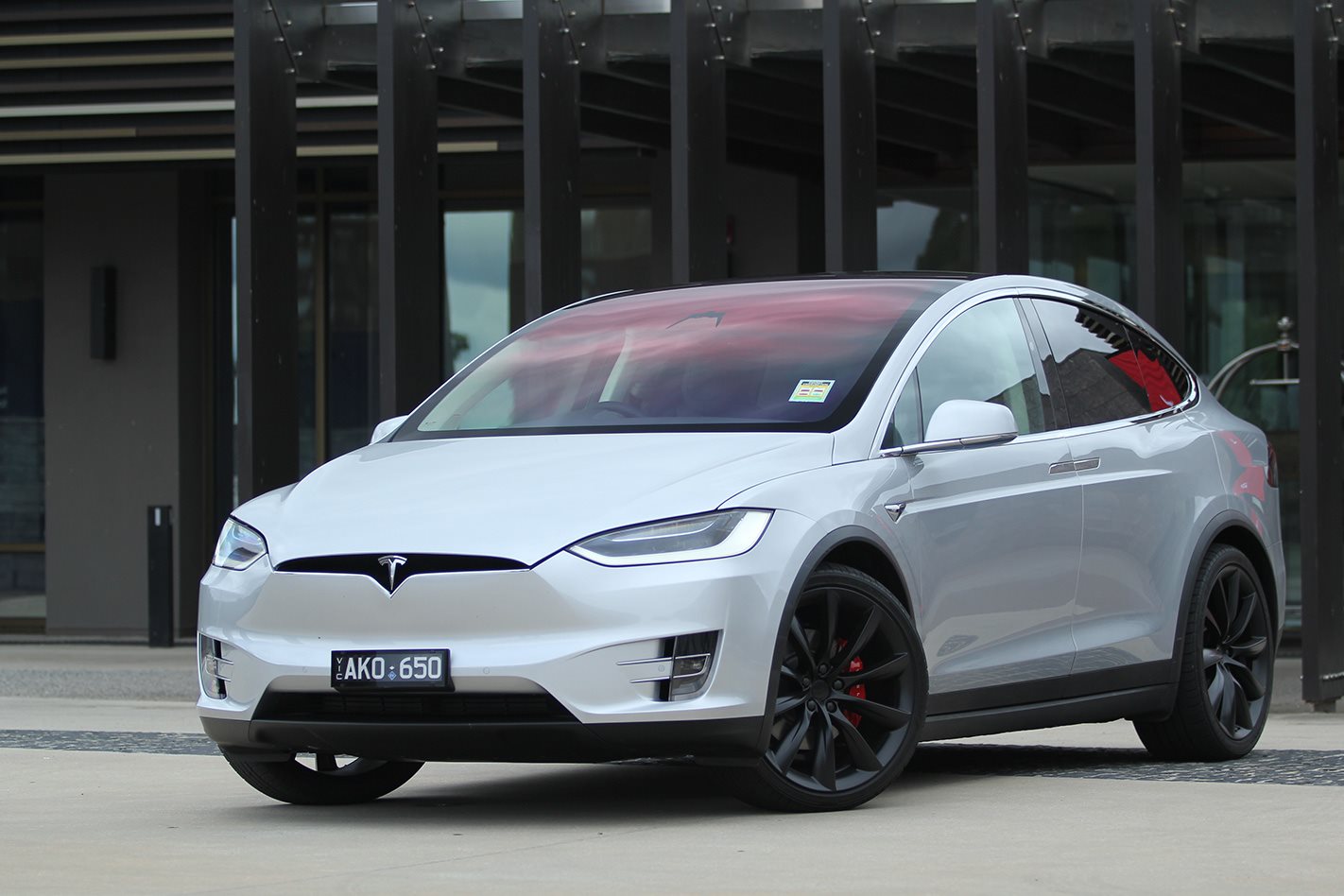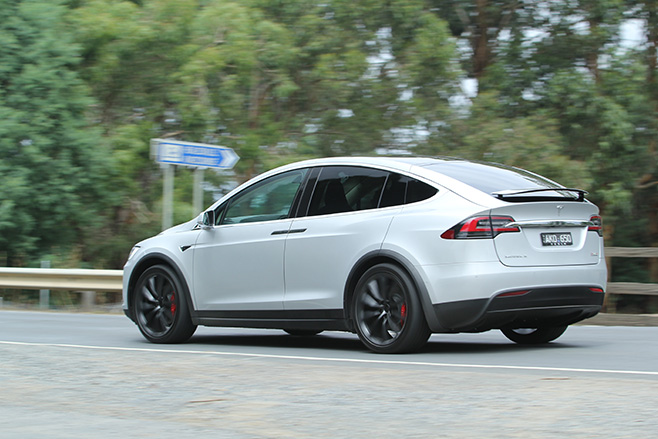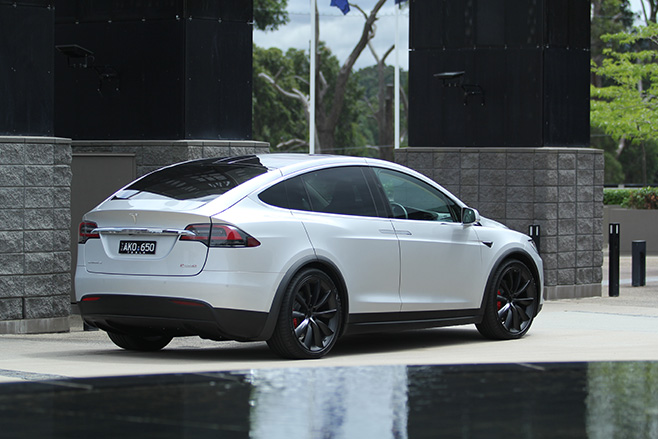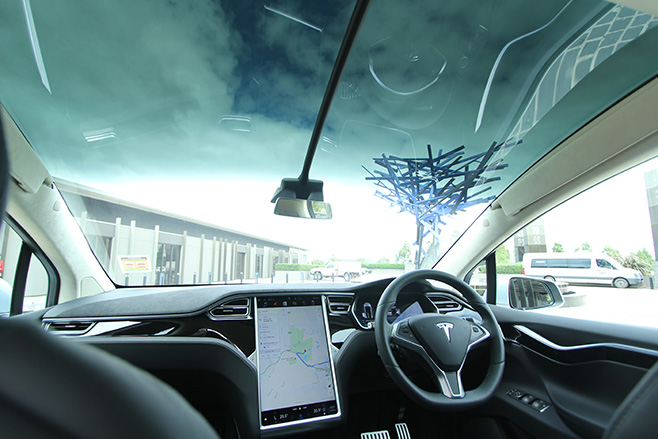
Heard about the Tesla Model X? Its reputation certainly precedes it: with staggering numbers such as a 0-100km/h sprint of 3.4 seconds and average fuel consumption of 0.0L/100km, Tesla’s first-ever SUV is certainly a remarkable machine.
However, at $159,342 retail (including luxury car tax) for the entry-level Model X 75D or a whopping $258,402 for the range-topping Model X P100D tested here, it’s far from a cheap means of family conveyance. Those prices, by the way, are when it’s in five-seat configuration. Ticking the box for a six-seat or seven-seat interior adds $4500 and $6000 respectively. So, does it justify such a significant outlay?
STRENGTHS
Don’t let its near three-tonne kerb weight deceive you. The Model X, when asked to, can handle corners like a sports car. It grips the road like a limpet, and its floor-mounted battery packs keep the centre of gravity low for zero body roll. Meanwhile, torque vectoring ensures outstanding cornering even while under power.

Instant response from its powerful dual electric motors makes the Model X stunningly fast – especially in the P100D grade tested here. Plant your foot down, and the Model X P100D leaps forward instantly. In fact it does so with such vigour that you may want to consider dialling it back to its less-intense Insane Mode (yes really) if you don’t want to upset your passenger’s stomachs. Dial up Ludicrous Mode (we’re absolutely not joking), and the P100D rips to 100km/h in a scarcely believable 3.1 seconds.
Guilt-free motoring is another Model X virtue. If you source your household power from renewable sources and keep your battery charged up from your wall outlet, the Model X can get you and your brood from point A to point B without any CO2 being emitted in the process.
Though it may look a bit compact from the outside, fitting seven adults in the Model X is certainly achievable. The hard plastic seat shells cut into knee room, and toe room for third-row occupants is still tight despite the Model X’s clever pedestal-mounted second row seats, but passenger packaging is commendable.
The Model X is a tech fest, a gadget-lover’s wet dream. From its huge tablet-style touchscreen infotainment display to its 360-degree array of cameras and radar sensors that will eventually enable a fully-autonomous self-driving capability, the Model X is festooned with high-tech gear. If you’ve got the latest TV and a cutting-edge stereo in your lounge room, odds are you’ll fall in love with the Model X.

With a claimed range of 542km on a single charge, the Model X P100D has the legs to quell most concerns of range anxiety – the fear that you’ll be left stranded, electron-less, during regular driving. The longest-ranged model is the more sedate 100D, though even the base Model X 75D enjoys a generous 417km maximum range.
WEAKNESSES
As accommodating as it is, there are sparse storage options for rear passengers. There are no seatback map pockets, for example, and the roof-hinged nature of the rear Falcon doors means you can’t store anything in them (unless you want them raining down on you as you open the door).
Dropping the third row seats is easy, but raising them again isn’t. You’ll need to reach deep into the boot to activate the switch that unlocks them, and there are no convenient straps or handles to pull them back up again – just a small tie-down hook.
Cost. At well over a quarter of a million dollars, the Model X P100D we tested is far from cheap. The performance-for-dollar quotient is incredible nevertheless, but do people buy seven-seaters for drag strip supremacy? Buyers may find better value at the lower end of the Model X range, albeit with a slight compromise in range.

Our tester was equipped with the optional 22-inch wheel, and the ride was brittle on rough ground as a result. The good news is that 20-inch items are standard-issue, and we’d advise to stick with them for the extra compliance they’d offer.
As cool as its top-hinged Falcon doors may look, they’re a little bit gimmicky. Sure, by removing part of the roof they do make getting in and out of the third row a smidge easier, but you’ll need to watch your height clearance when parking (such as in shopping centre car parks) and they’ll knock over any small children who happen to be standing right next to them. Tesla says sensors in the doors should stop them from colliding with walls and roofs, but standing right next to the car while they were opening just resulted in being forcibly shoved sideways. Surely a regular ol’ sliding door would suffice – and save a heap of weight and mechanical complexity at the same time.
Rearward vision is virtually non-existent in the seven-seat model with all three rows raised, thanks to the full-size fixed headrests on the second row. The third row headrests can fold down, but you’ll only have a decent view through the rear window if you opt for the six-seat configuration. On the plus side, you can have the rear-view camera permanently display on the infotainment screen to compensate.
ANY RIVALS I SHOULD CONSIDER?
As far as all-electric, supercar-shaming SUVs go, the Model X is all by its lonesome in a segment of its own creation. If going fast while carrying seven is your only concern (and damn the environment!), you may want to investigate the Mercedes-AMG GLS63, BMW X5M, Volvo XC90 T8 R-Design and Audi SQ7.



